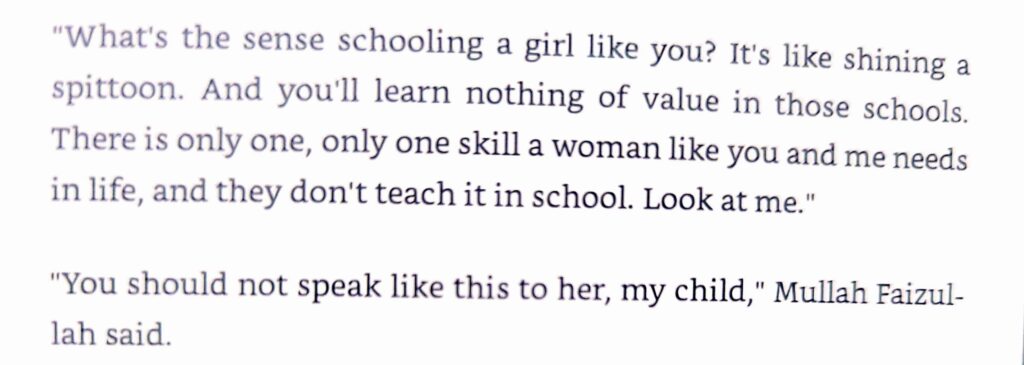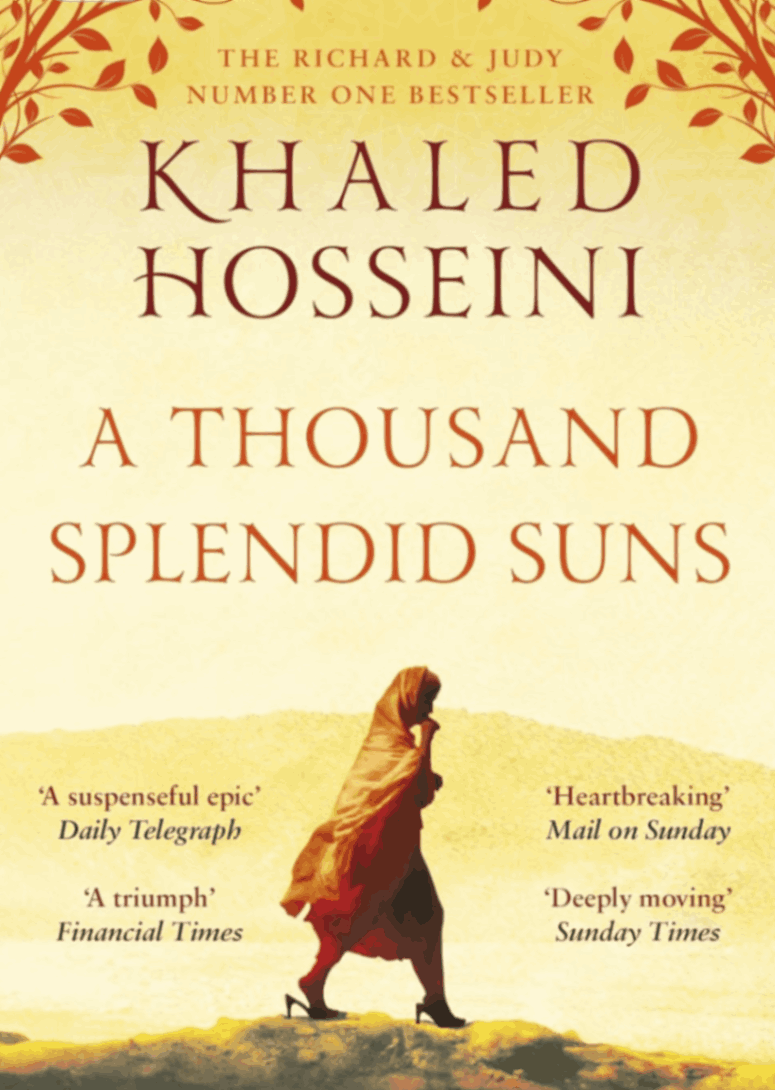Traveling to the war-torn countries is often impossible, unsafe, or restricted.
Yet, literature offers a unique passport!
This unique passport authorized by Khaled Hosseini allowed me to witness history of Afghanistan, feel the struggles of people, and understand cultures without ever stepping foot in a conflict zone.
Some books don’t just tell stories; they transport us, making us feel as if we are walking through the ruins, hearing the echoes of lost voices, and witnessing the resilience of those who endure.
This blog post is not just a book review. Basically it’s an exploration of how A Thousand Splendid Suns acted as a literary passport, taking me through the heart of a war-torn country of Afghanistan.
Table of Contents
How did I end up into reading A Thousand Splendid Suns?
A Thousand Splendid Suns didn’t catch my attention at first as because its title never sounded interesting to me .
To be very honest, mysterious and catchy novel titles have always attracted me.
I thought, What’s the big deal about a thousand splendid suns? Therefore I ignored this book for a long time.
After reading my latest blog on ‘Top 5 Mystery Thrillers to Read While Traveling‘, my friend Akash recommended me this novel by Khaled Hosseini. He told that the plot of the book was set up in the war torn country of Afghanistan. Now this friend of mine has always given me good movie recommendations. Therefore immediately I trusted his recommendation and read this book and that too at a stretch one single day.
455 Pages in one single day! I am indeed proud of my eyes!
A Tale of Two Cities: Herat and Kabul in Khaled Hosseini’s “A Thousand Splendid Suns”
Two Women. Two Narratives. Two Cities.
This is what A Thousand Splendid Suns is all about.
Khaled Hosseini’s A Thousand Splendid Suns is a novel of contrasts!
Two women from different backgrounds, two intertwining narratives of love and suffering, and two cities that shape their destinies.
Mariam and Laila’s lives unfold across Herat and Kabul, revealing Afghanistan’s deep-rooted traditions, political turmoil, and the indomitable spirit of its people.
Mariam: The Illegitimate Child from Herat
Born as a harami (illegitimate child), Mariam is raised in isolation outside Herat. She grows up in a small kolba (hut) experiencing an isolated childhood with her mother, Nana.
Herat, one of Afghanistan’s oldest and most historically rich cities, is where Mariam’s journey begins. This city, known for its cultural heritage, serves as a stark contrast to the turmoil awaiting her in Kabul. The city represents a conservative, patriarchal society where women’s roles are restricted.

Historically, Herat was a center for Persian art, literature, and architecture. In the novel, the city retains its sense of beauty but also highlights the limited freedoms for women like Mariam.
Little Mariam wanted to go to school and she communicated her desire to her mother. The conversation after that made me cry.


The contrast between Herat’s poetic history and Mariam’s personal suffering underscores the novel’s themes of oppression and resilience.
If Herat represents Mariam’s past and lost innocence, Kabul is the city where her fate is sealed.
Laila: The Educated Dreamer from Kabul
Laila, the novel’s second protagonist, grows up in Kabul, and through her, the city is depicted in both its glory and devastation.
Kabul before war was a city of promise. The city is vibrant, with diverse cultural influences, reflecting a time when Afghanistan was relatively progressive.
This girl is raised in a progressive Kabul household, encouraged by her father to seek education.The Soviet invasion and subsequent war shatter her world, leaving her orphaned.
To leave this blog spoiler free, I will not talk much about this character.
Two Narratives: Pain and Perseverance
Hosseini masterfully weaves together two perspectives, illustrating the realities of Afghan women.
The novel’s setting shifts between two cities of Heart and Kabul, each representing different aspects of Afghan history and culture.
The best part of the novels “A Thousand Splendid Suns”
Before reading this novel, I viewed Afghanistan through the lens of history, politics, and war.
After reading it, I saw it through the eyes of its people, through the love between a mother and daughter, the friendships formed in hardship, and the quiet resilience that no war could erase.
This book made me realize that travel isn’t just about seeing places it’s about understanding stories.
While I may never set foot in Afghanistan, A Thousand Splendid Suns ensured that a piece of it will always stay with me.
Hosseini’s writing is cinematic in its detail, painting Afghanistan’s shifting landscapes. From the lively bazaars of Kabul to the barren deserts and war-torn ruins, everything was written with remarkable precision. Each setting felt as if I were walking through it myself.
Some of the violence in this book was extremely brutal and can make you want to kill this horrible character Rasheed for multiple times.
For me as a woman, it was extremely difficult to read this book. I cried for both of these Afghani female characters of Mariam and Laila for the most of the parts.
And overall, the best part of this novel is that even after unimaginable sadness and intolerable suffering, the human survival instinct and maternal instincts truly shine.
Finding the Beauty in the “Boring” Title: “A Thousand Splendid Suns”
At first glance, A Thousand Splendid Suns might somewhat vague title. Even I also found it to be boring.
However, beneath its quiet elegance lies a powerful metaphor that encapsulates the novel’s essence.
But as you complete reading this book you will understand what is these splendid suns all about.
Khaled Hosseini drew inspiration for the title from a 17th-century Persian poem by Saib Tabrizi, which praises the beauty of Kabul:
“One could not count the moons that shimmer on her roofs,
Or the thousand splendid suns that hide behind her walls.”
The lines depict Kabul as a city of immense beauty, illuminated by countless shimmering moons and radiant suns hidden within its walls. But in the context of the novel, these words take on a much deeper meaning.
In Hosseini’s narrative, the thousand splendid suns hiding behind the walls, represent the women of Afghanistan. These Afghani ladies brilliant, resilient, and full of potential, yet often hidden behind societal restrictions.
Mariam and Laila, the novel’s protagonists, endure unimaginable suffering yet never lose their inner strength.Their struggles mirror those of countless Afghan women who have been confined by patriarchal traditions and war.
Despite being “hidden behind the walls,” these women remain radiant, much like the sun.
The poem speaks of moons that shimmer openly and suns that remain hidden.
In the novel, this imagery can be seen as a metaphor for gender roles:
The moons (men) are visible, dominant, and unrestricted.
In this novel, only the moons shimmer symbolizing men. On the other hand the splendid suns, representing women, remain hidden behind the walls, no matter how bright they are. Ultimately, this is what happens when only the moons try to shine by suppressing the suns.
But no matter how dark the night is, no matter how much the moon tries to restrict and hide the sun behind the walls, shining bright is the sun’s inherent nature. And in this novel, after enduring immense oppression and countless dark nights, the sun finally shines.
What initially seems like boring title, it transforms into a powerful statement about gender, struggle, and hope. A Thousand Splendid Suns is not just a beautiful phrase. This title is a tribute to the countless Afghani women whose strength remains unrecognized yet unbreakable.
Final Thoughts: A Must-Read for Every Traveler
If you are a traveler at heart, this book will take you on a journey unlike any other.
It will make you feel the dust of Kabul’s streets beneath your feet, hear the echoes of history in its mountains, and most importantly, understand the soul of a nation beyond headlines and stereotypes.
Khaled Hosseini didn’t just write a book. He literally authorised an Afghani visa through his literature. And for that, I am forever grateful.
Would you ever consider visiting Afghanistan, even if just through literature?
Let me know your thoughts!
FAQ section
What mental preparation should you do before reading thousand splendid suns?
Khaled Hosseini’s novel is an emotionally intense journey through war, oppression, and resilience. Preparing yourself mentally can help you fully appreciate its impact while managing its heavy themes.
1. Expect Deep Emotional Impact
The novel depicts violence, abuse, and loss, evoking strong emotions.
2. Understand the Historical and Cultural Context
The story spans Afghanistan’s Soviet invasion, civil war, and Taliban rule.
Familiarizing yourself with Afghan traditions and gender roles enhances understanding.
3. Prepare for Themes of Female Oppression and Strength
The novel highlights forced marriage, domestic abuse, and gender inequality.
Despite suffering, it ultimately showcases women’s resilience and hope.
4. Be Ready for Frustration and Helplessness
Certain scenes, especially involving Rasheed’s cruelty and Taliban oppression, can be difficult.
Remember that the story, while heartbreaking, leads to hope and renewal.
5. Keep an Open Mind
The novel presents Afghan culture authentically, which may differ from personal perspectives.
Avoid judging characters’ choices through a Western lens—instead, seek to understand their realities.
6. Have a Support System
If you relate to the themes of abuse or war, discuss the book with a friend or book club.
Processing emotions through journaling or conversation can help.
7. Focus on the Message of Hope
While much of the novel is tragic, it ends with redemption and renewal.
Laila’s story, in particular, reminds us that hope endures even in the darkest times.

